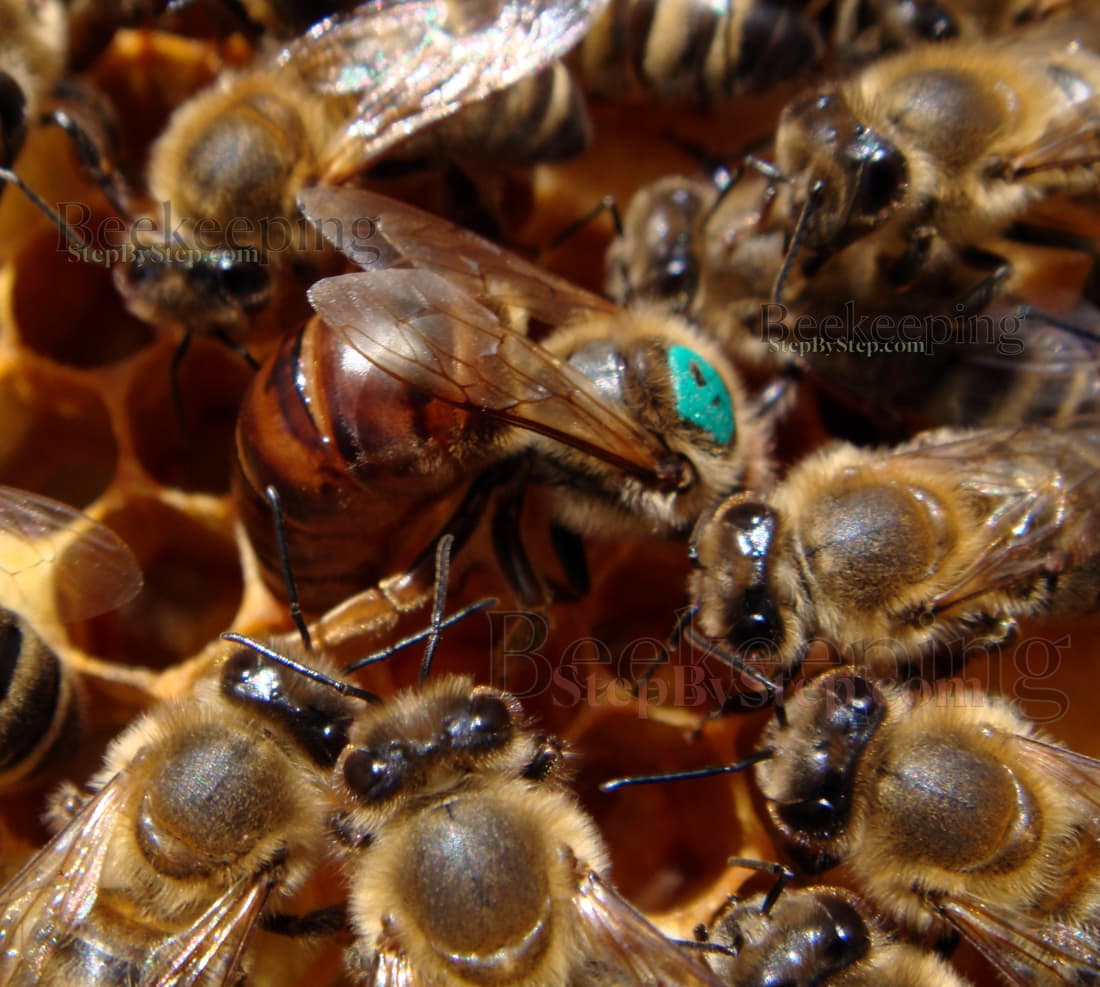
Queen lays eggs in honey comb cells and after three days larvae will hatch from them. The bees nurture, feed and keep the larvae warm. When the larvae are old enough the bees will cover the cells with a thin wax layer. In this covered cell, the larvae transforms into a pupa and continues her development through few more days. When the young bee is fully developed, she chews through the wax capping and emerges from the cell.

Open brood
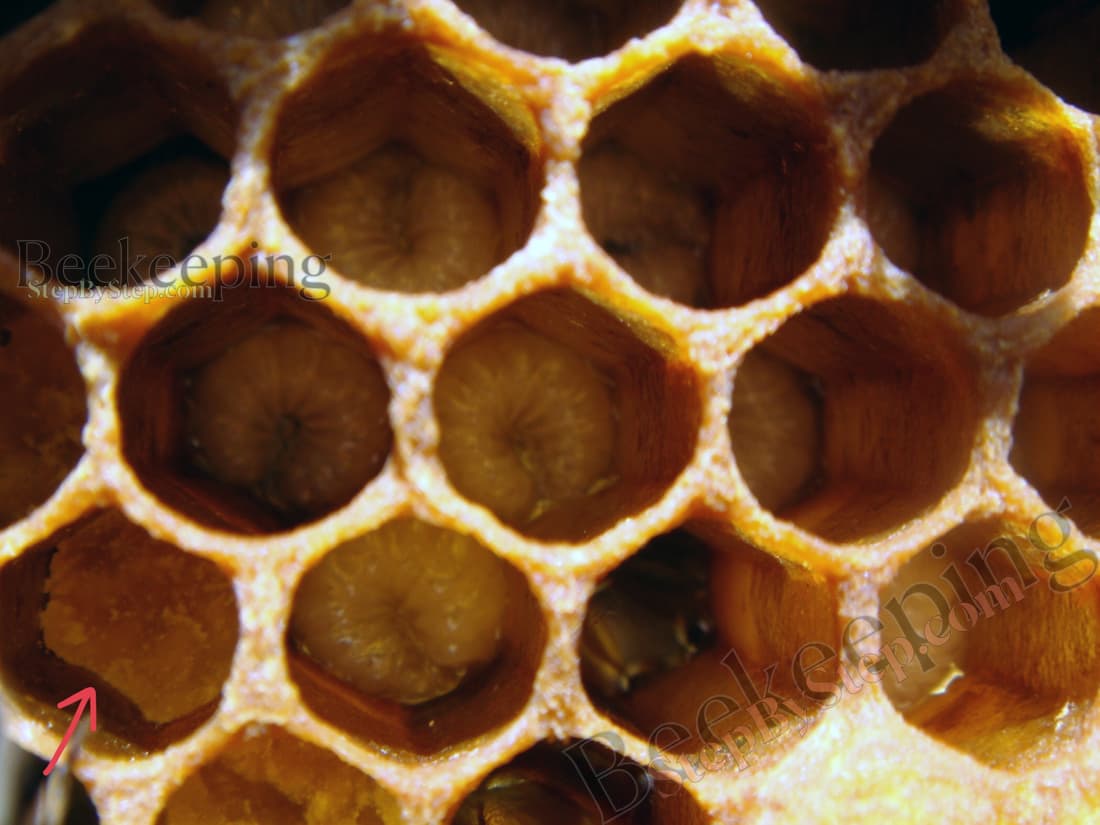
An open brood isn't covered with wax cappings – both eggs and larvae are open brood.
In order to notice the eggs and quite young larvae, you will need a bit of practice, but the older larvae are easily noticed in honeycomb cells.
Advertisement :
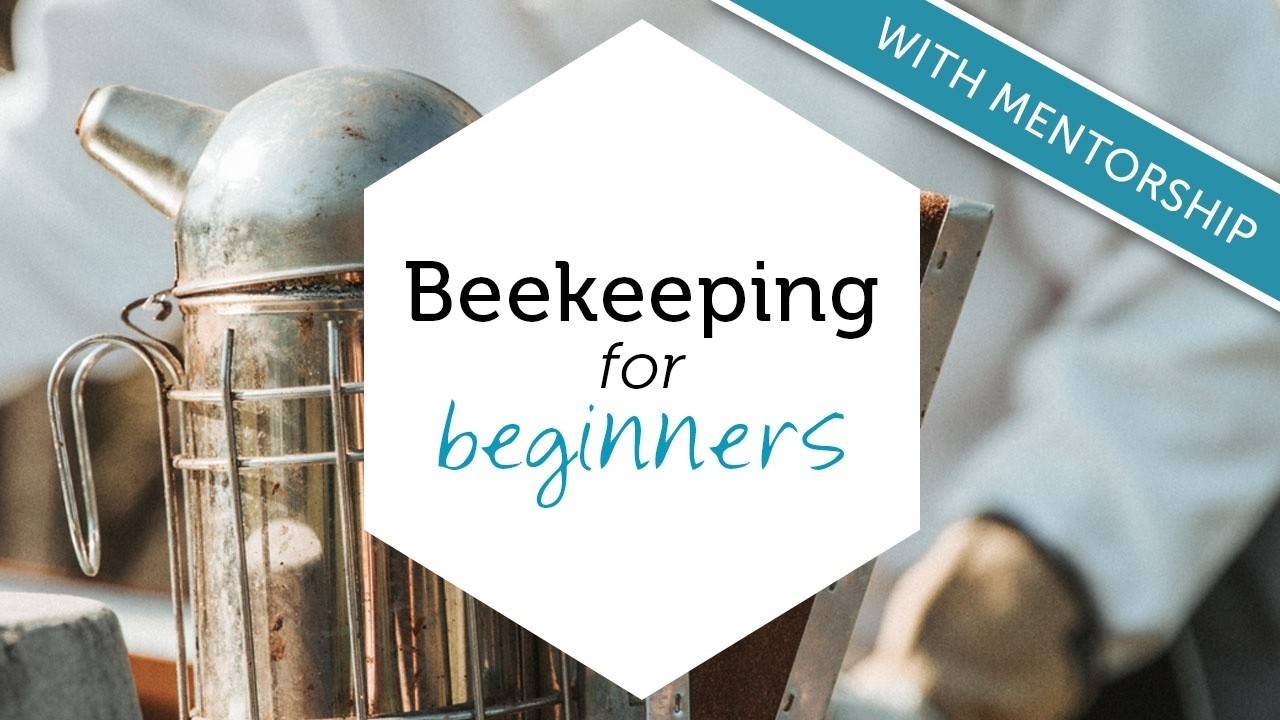
Beekeeping for Beginners
Everything you need to know!
This is a full beekeeping course for beginners.
Eggs

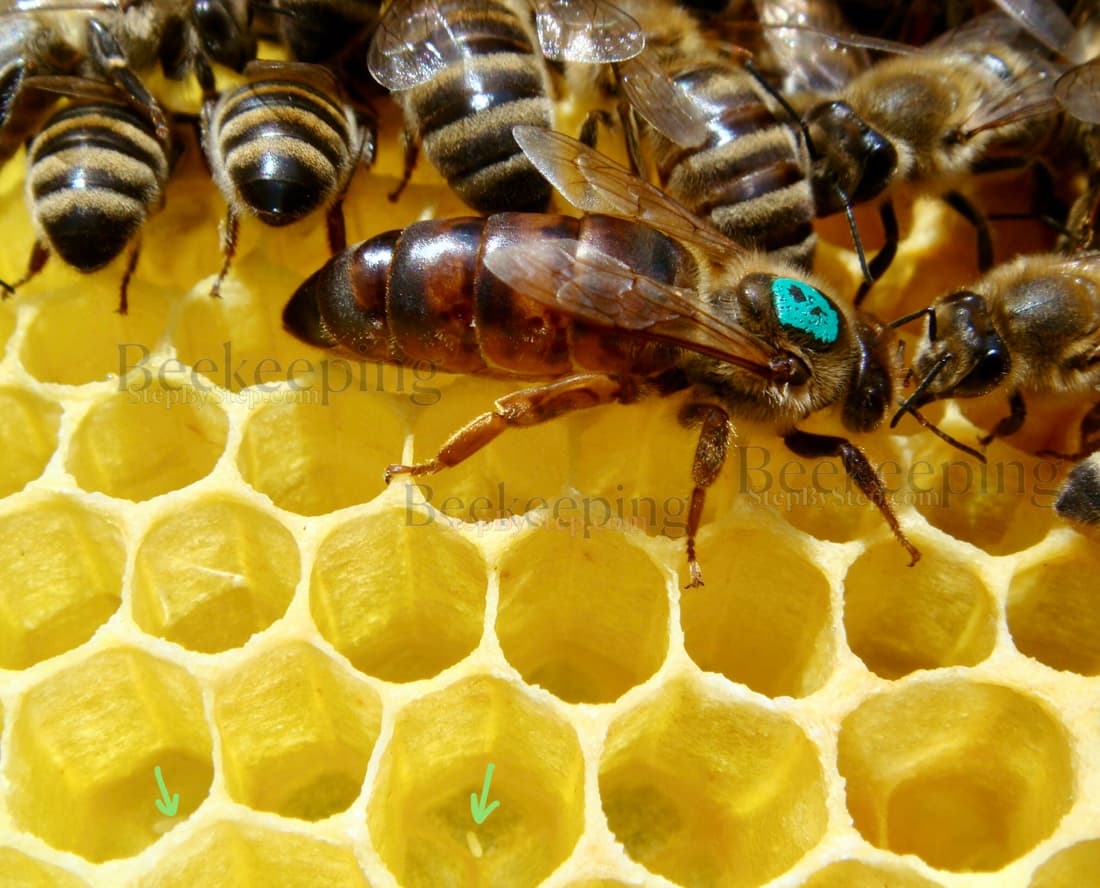
The queen can lay up to 2000 eggs in a day.
She lays one egg in one cell.
The queen lays eggs in the center of the bottom of the cell that the worker bees previously cleaned and prepared. Eggs are white and look like tiny grains of rice.
![]() Day 1 – egg is standing vertically in the center of the cell
Day 1 – egg is standing vertically in the center of the cell
![]() Day 2 – egg is leaning to the side
Day 2 – egg is leaning to the side
![]() Day 3 – egg is placed horizontally on the bottom of the cell
Day 3 – egg is placed horizontally on the bottom of the cell
After 3 days a larva hatches from the egg.
Fertilized and unfertilized eggs
The queen lays fertilized and unfertilized eggs.
Worker bees hatch from fertilized eggs and drones hatch from unfertilized eggs.
Honeycomb cells aren't the same size. There are worker and drone cells.
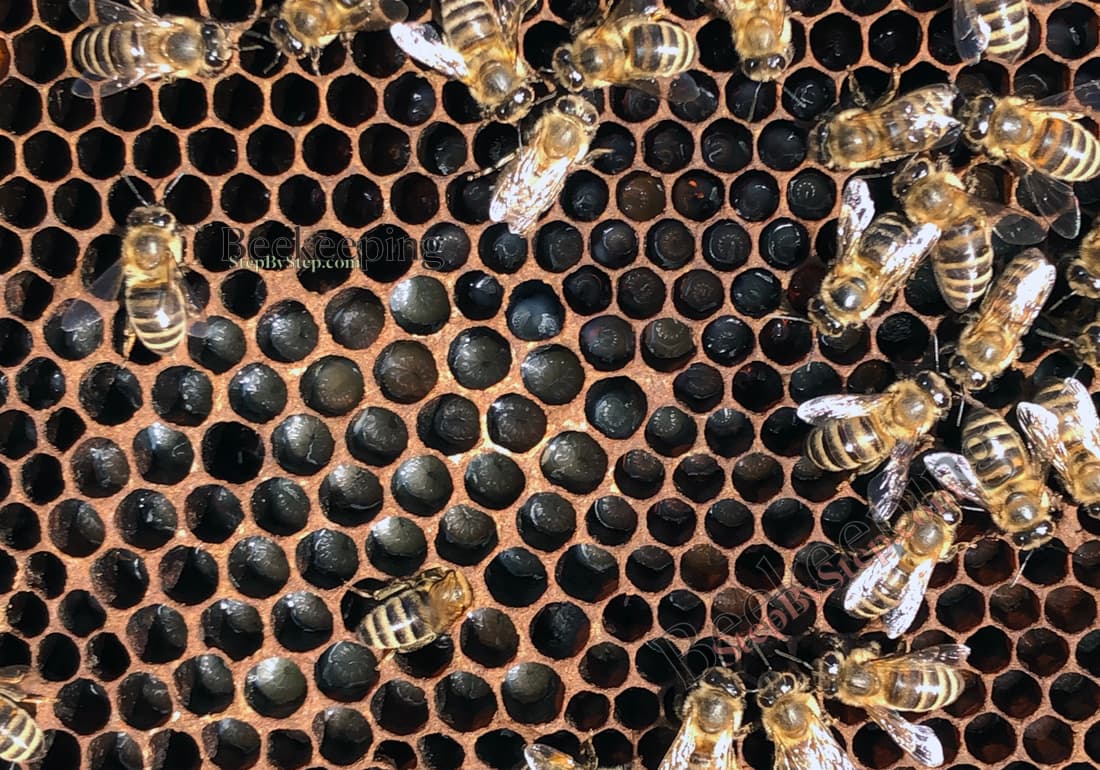
Worker cells are smaller and queen lays fertilized eggs in them.
Drone cells are bigger and the queen lays unfertilized eggs in them.
Larvae
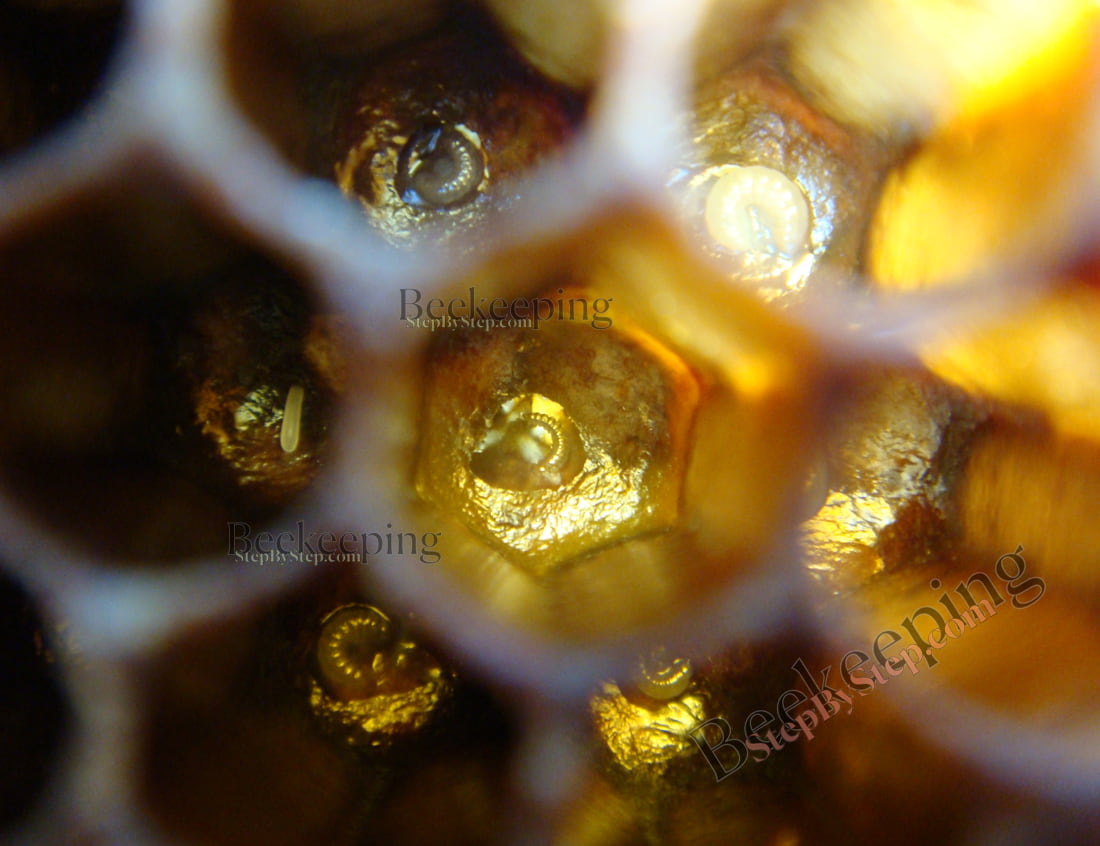

After 3 days an egg becomes a larva. The bees nurture, feed and keep the larvae warm.
Larva is bend in the cell in a shape of letter C.
Healthy larvae are pearl white – if this isn't the case there is a problem.

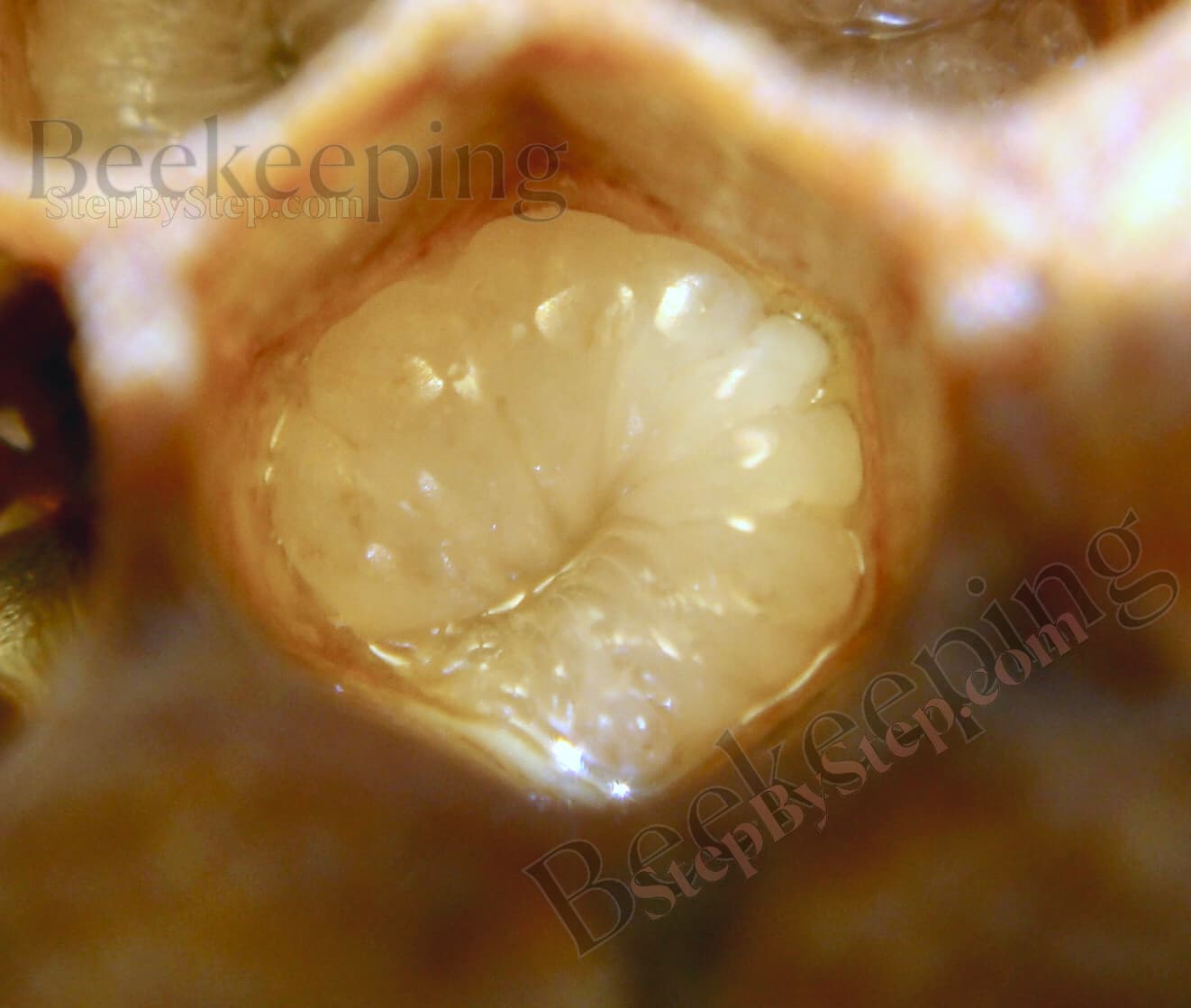
Larva hatched from fertilized egg can develop into worker bee or queen depending on the food bees are feeding it. Drones, on the other hand, develop from unfertilized eggs.
All of the larvae are fed with royal jelly in their first 3 days.
After that, if the larvae hatched from a fertilized egg is fed with a mixture of honey and pollen, she will develop into a worker bee.
If the larvae that hatched from a fertilized egg is fed exclusively with royal jelly even after her first three days, she will become the queen.
The number of days that is needed for the larvae to develop differs for worker bee, drone or the queen.
The queen is 5.5 days in the stage of a larvae, worker bee 6 days and drone 6.5 days.
Closed brood
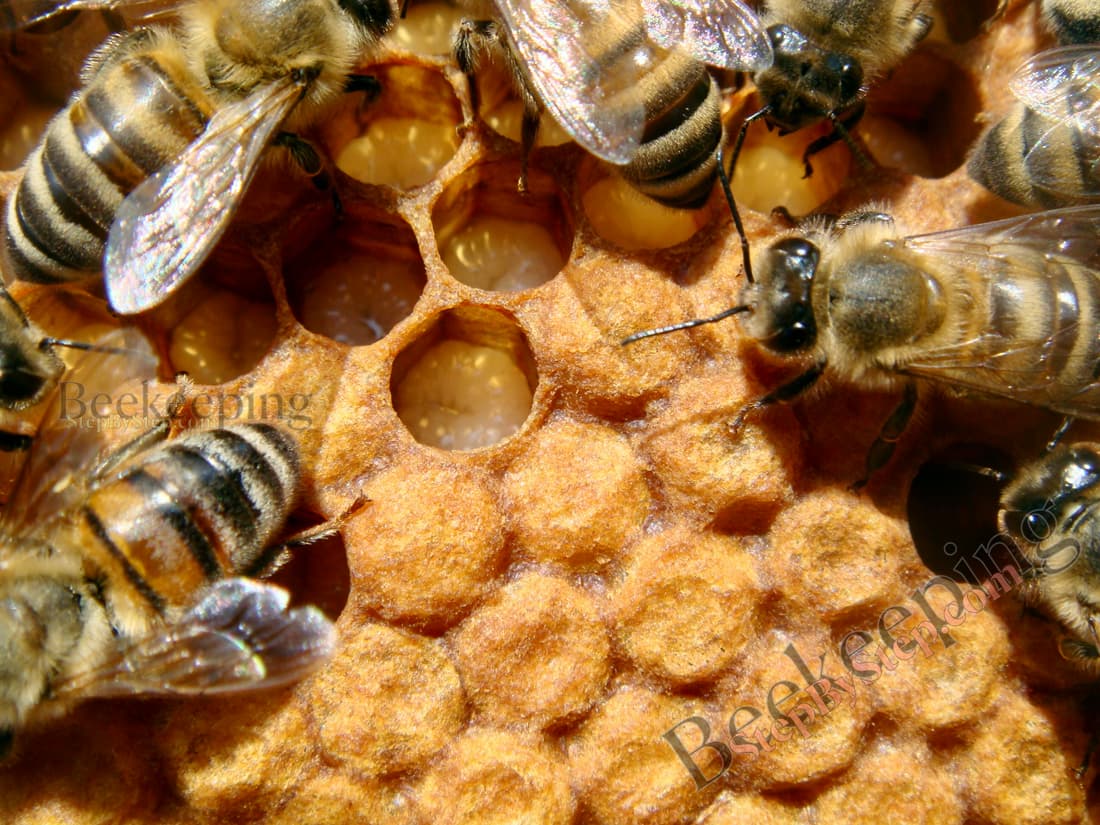
After a certain number of days the bees cover the cells with larvae in them with a thin layer of wax (cappings) – closed brood.
Pupa
When the bees cover the cell with wax, the larvae straightens to a vertical position, makes a cocoon and enters a pupa stage.
Number of days in pupa stage differs between queen, worker bee and drone.
The queen is at the pupa stage for 7.5 days, worker bee 12 and drone 14.5 days.
Difference between worker and drone brood and the queen cells
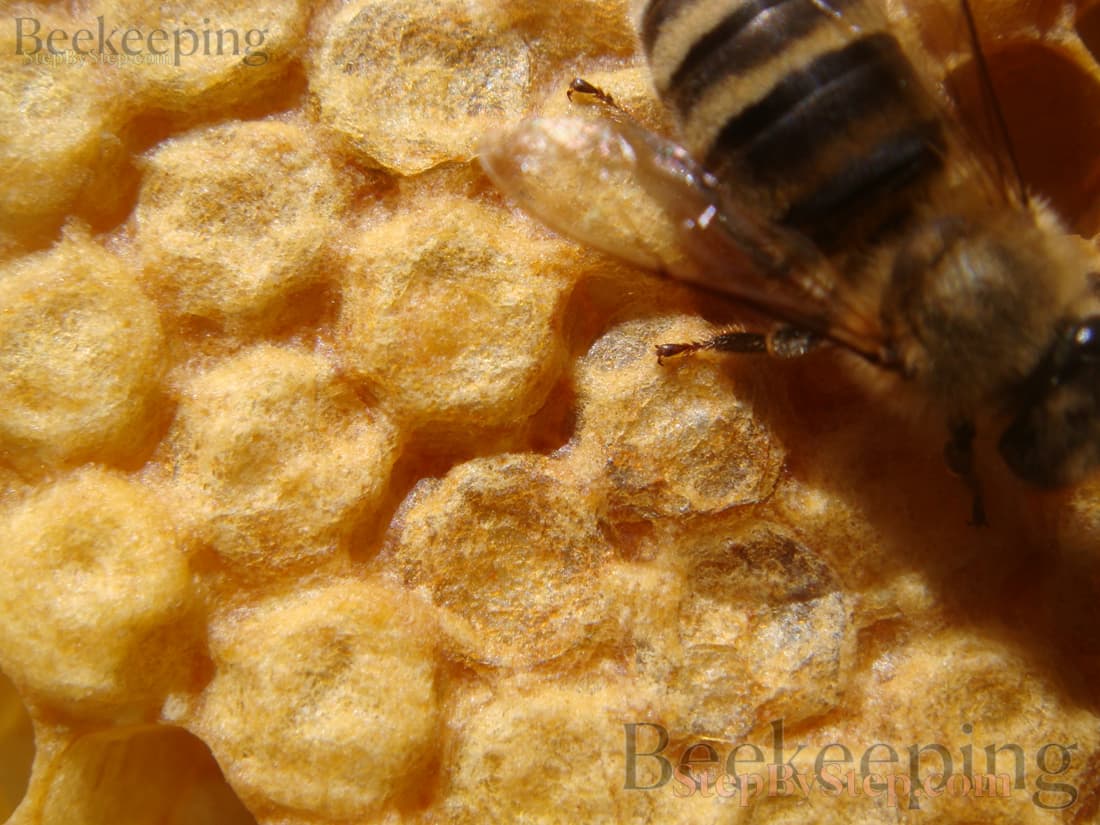
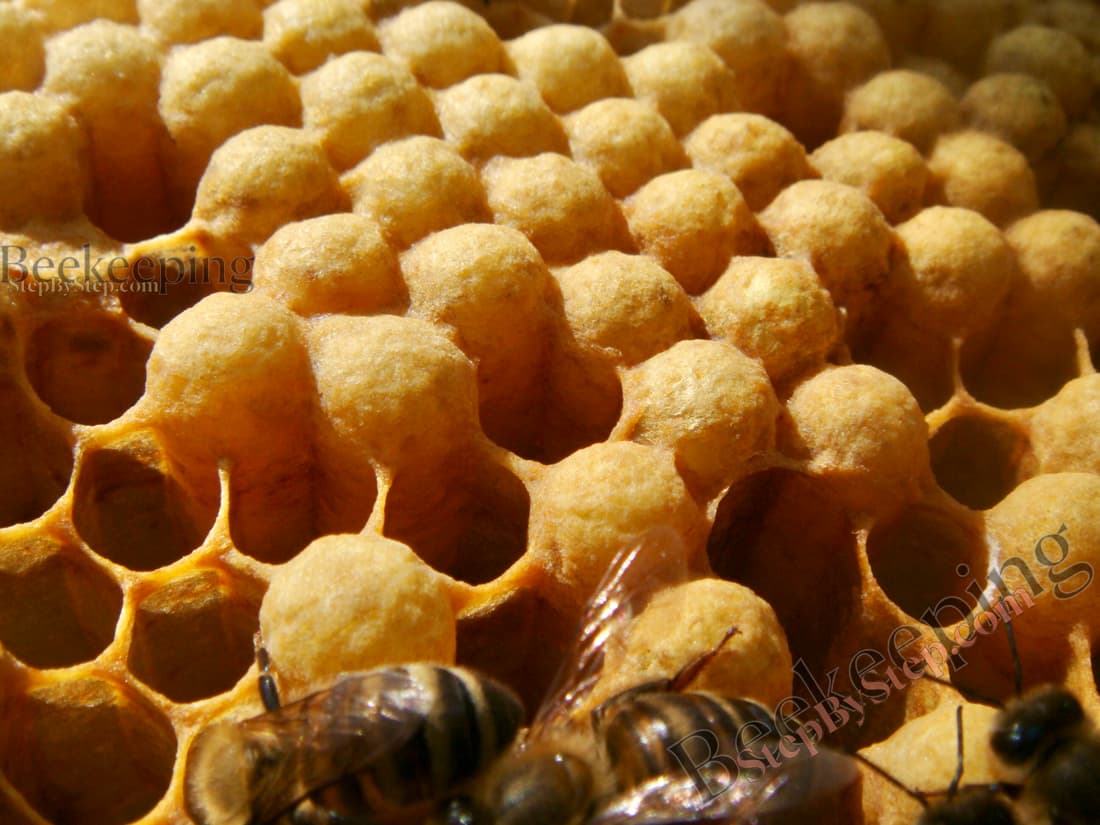
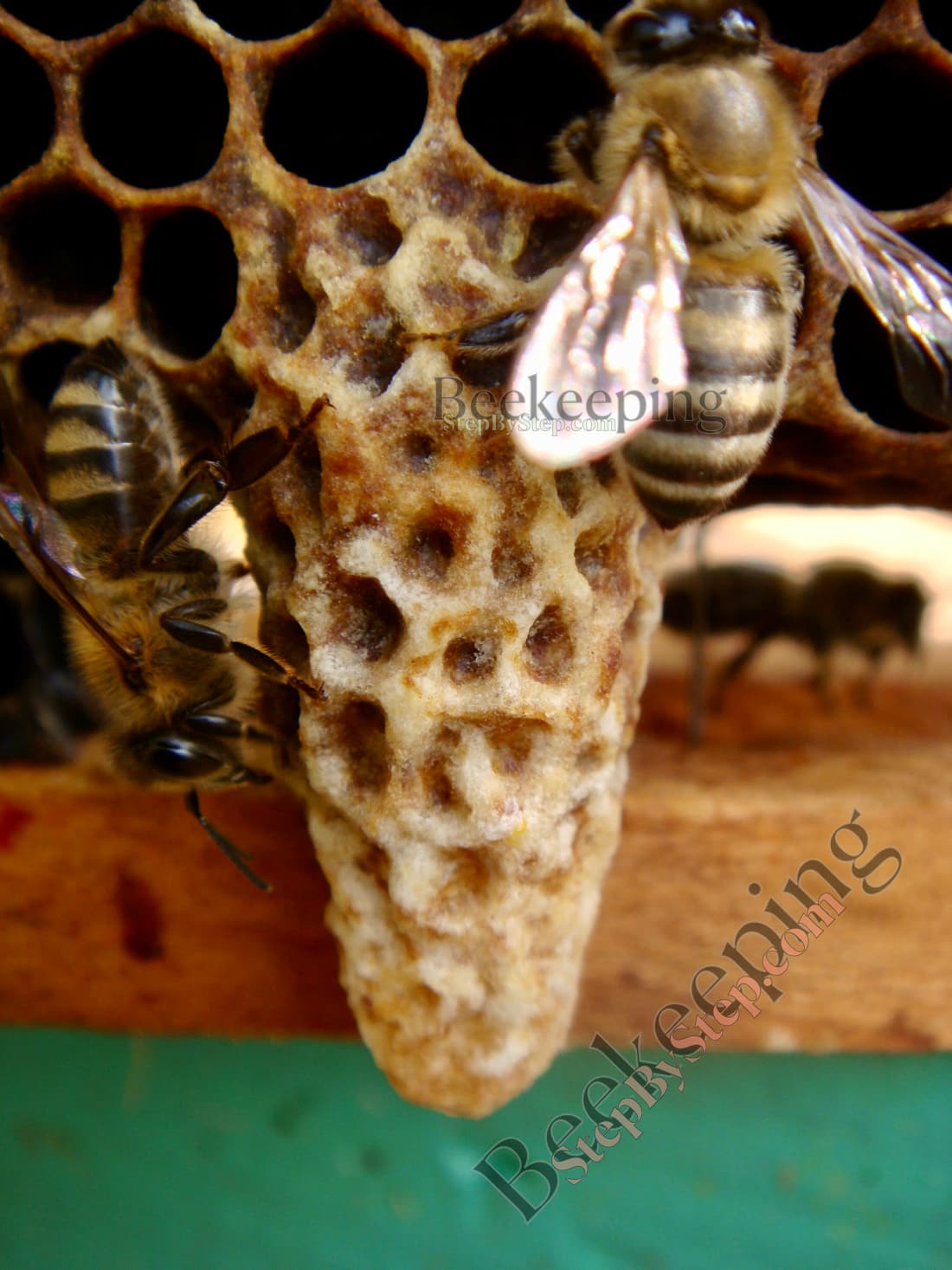
Worker brood
![]() Worker brood has smaller cells than drone brood.
Worker brood has smaller cells than drone brood.
![]() Closed worker brood is flatter – it isn't arched like drone brood.
Closed worker brood is flatter – it isn't arched like drone brood.

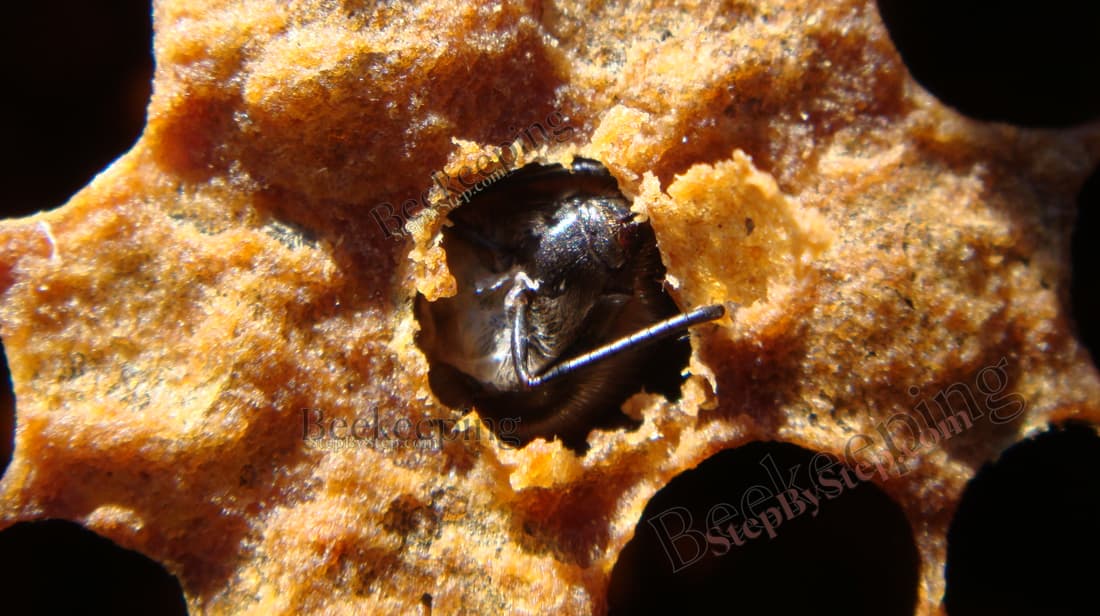
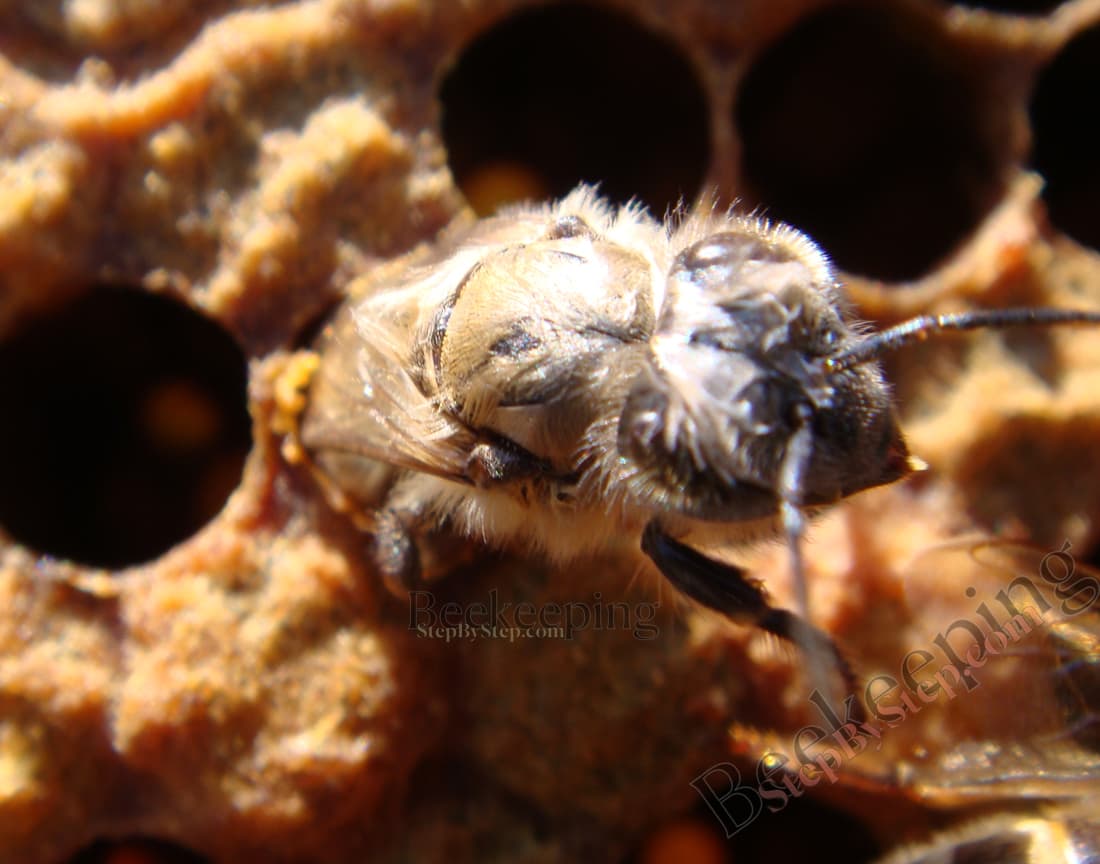
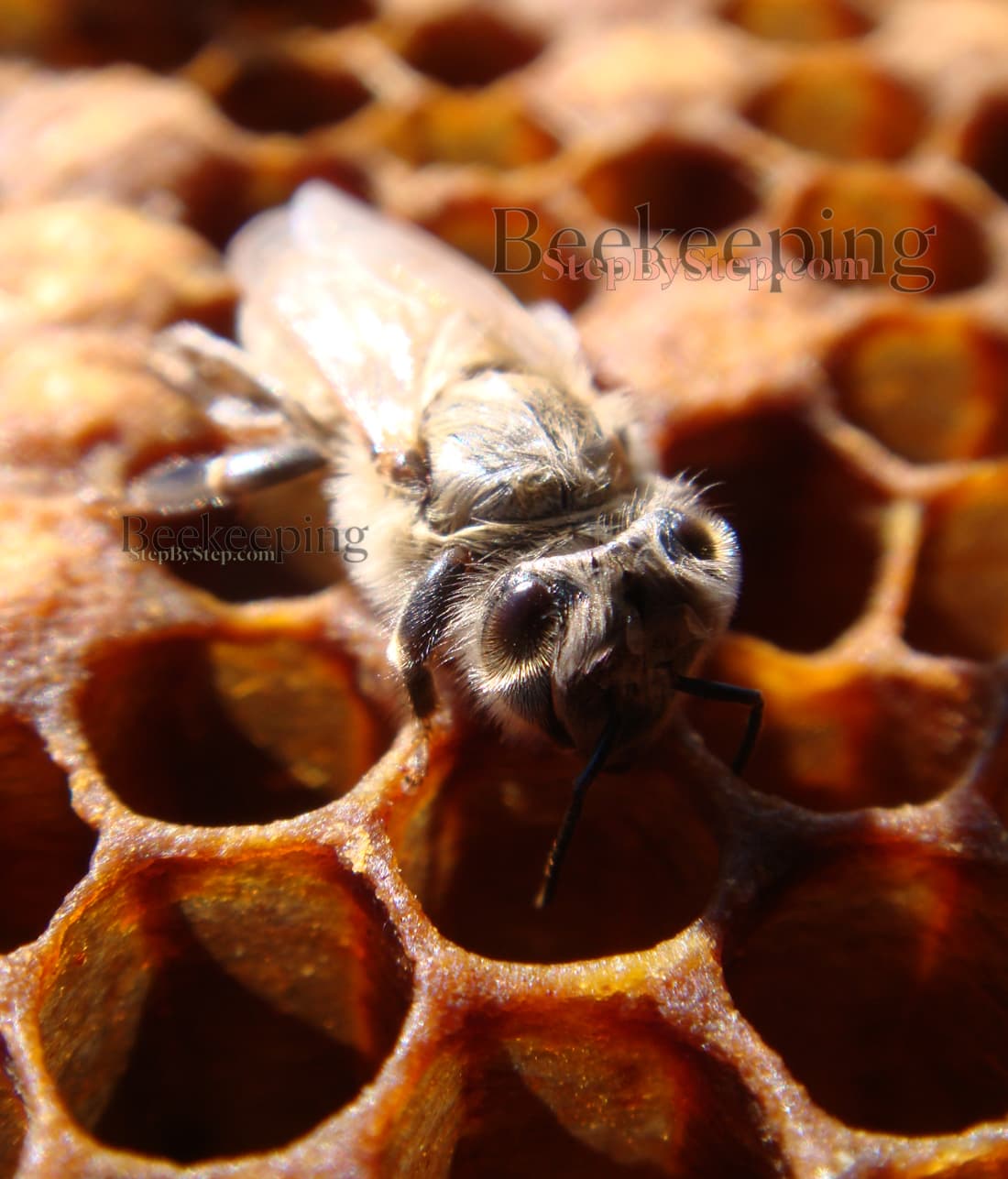
21 days need to pass for a full development from laying of the egg to emerging of a young worker bee from the cell – 3 days egg stage, 6 days larvae and 12 days pupa aka closed cell.
Drone brood
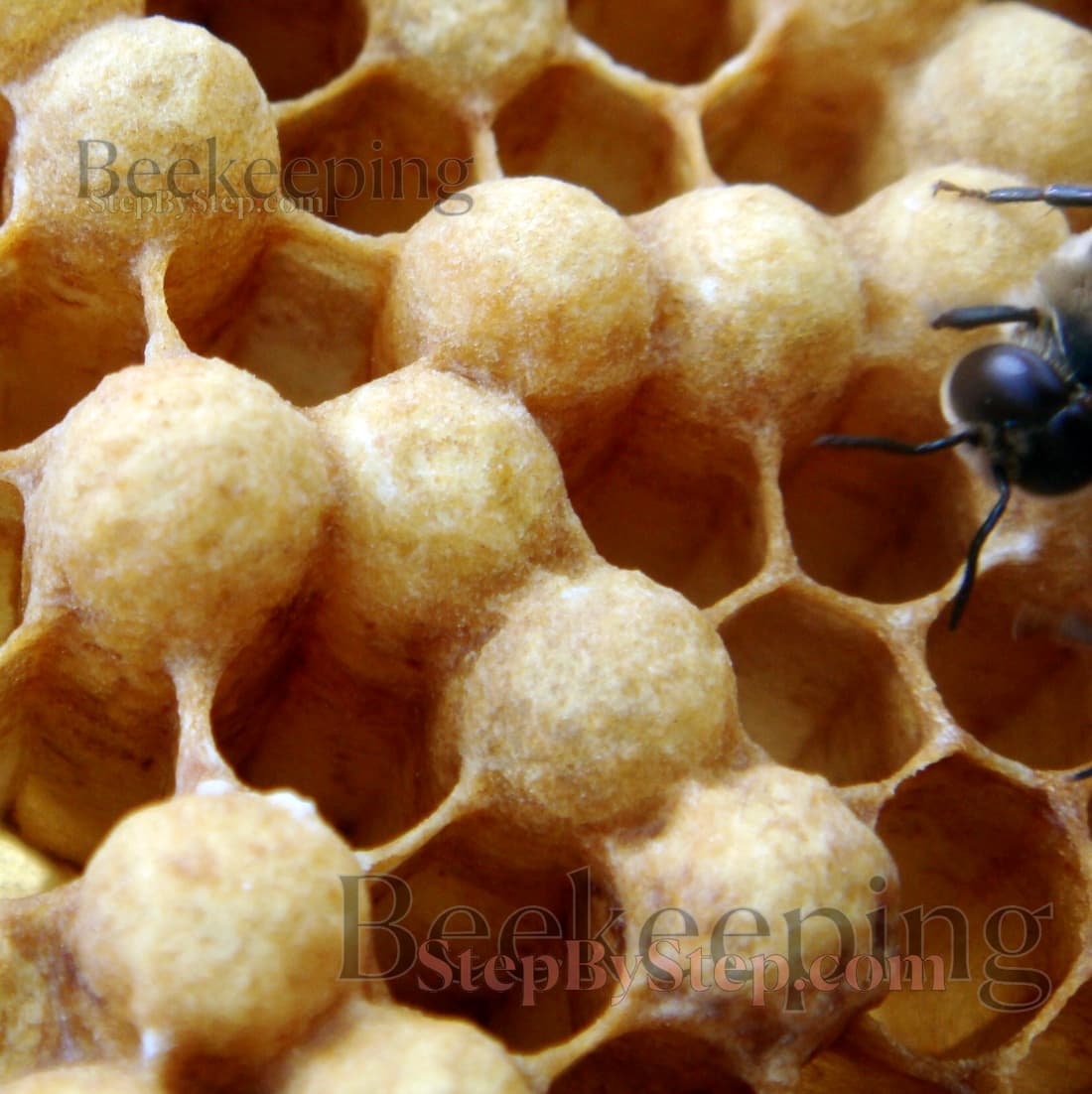
![]() Drone brood is recognizable by larger cells.
Drone brood is recognizable by larger cells.
![]() Closed drone brood is recognizable by its arched, rounded caps.
Closed drone brood is recognizable by its arched, rounded caps.
Usually, but not always, the drone brood is located on the edges of the frames while the worker brood is usually in the middle.
It takes 24 days for the drone to develop – 3 days egg stage, 6.5 larvae and 14.5 pupa aka closed cell.
Queen cells
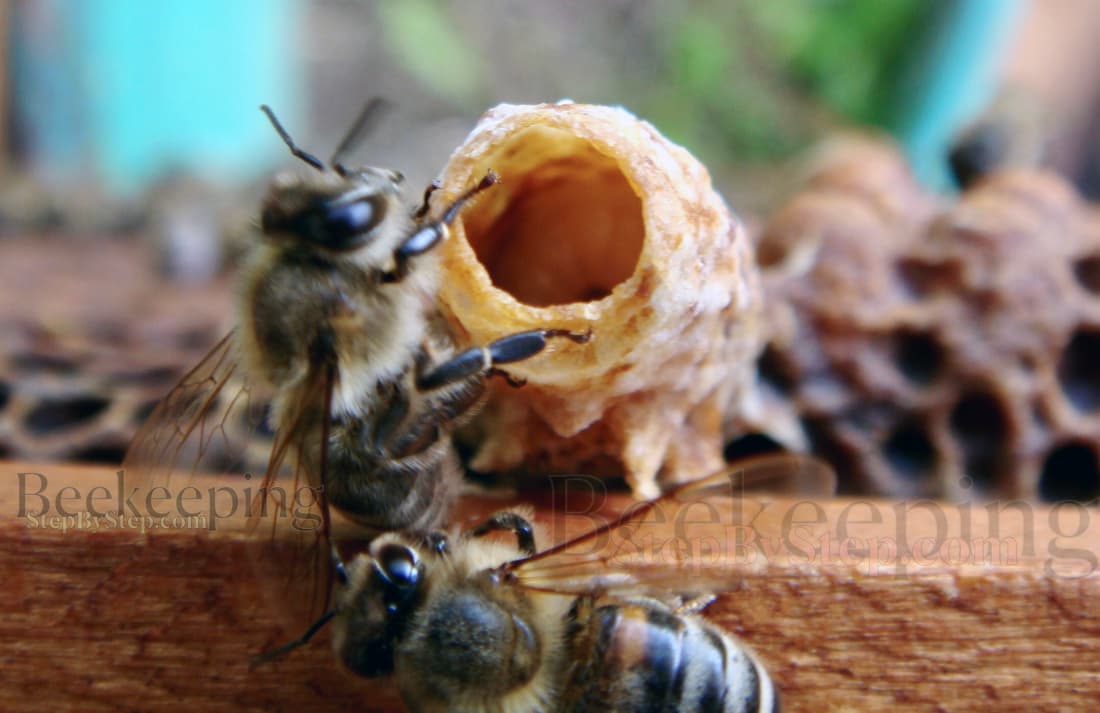

Because of the great quantity of royal jelly with which she is being fed and the colony's need to get a queen as soon as possible, the queen is the quickest one to develop.
If you want to learn more about queen cells, go to: Queen Cells and Three Kinds Of Queen Cells.
If you want to learn more about queen development, go to: Queen Development.
Practice
